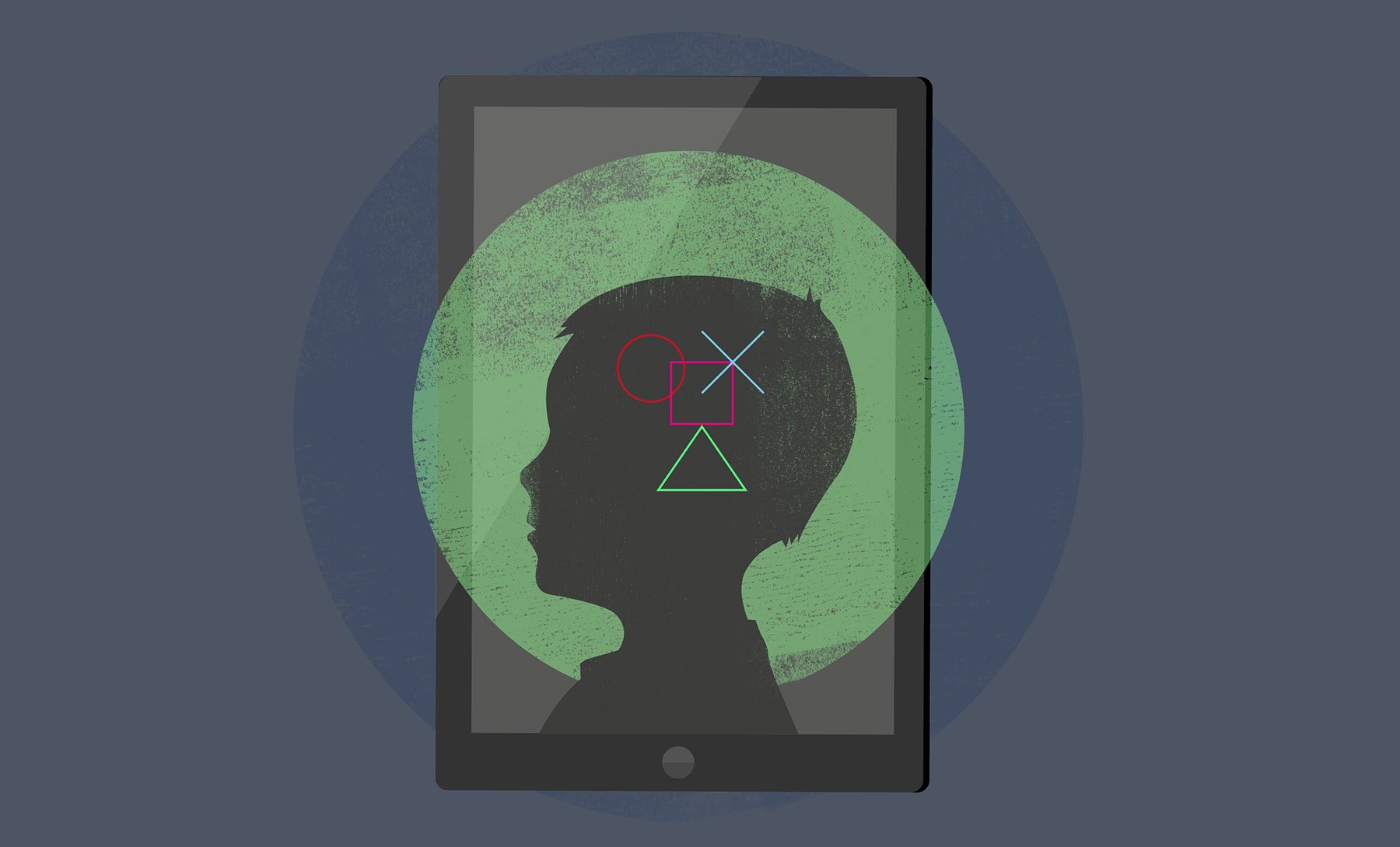
Stop Game-Shaming – How to make kids’ games that parents (and Kanye) can trust
Kids play too many games. And what’s more, they spend too much time staring at a screen. And they get addicted and tricked into spending way too much money on them. They ought to be reading books and running around outside instead, right?
So goes the standard conversation about games amongst parents of young children. Ad nauseam. Occasionally someone will mention Minecraft and the creative outlet it offers, but it’s very hard to escape the general feeling of disapproval. None of this is helped by the runaway success of mobile games like Clash of Clans, which has reportedly netted over $5m per day in in-app purchases whilst looking and sounding very much like it’s aimed at seven year olds.
It’s these issues that have come sharply into focus for us as we work through the process of making two games (one of which is a VR experience) aimed at 5-10 year olds and by extension, their parents. Mums and Dads are in most cases the gatekeepers to their kids’ digital worlds, so their ringing endorsement, is critical to the success of any new product hoping for a ‘home run’ in the hyper-competitive kids category.
It really shouldn’t be so difficult. Our research has turned up plenty of evidence pointing to a strong positive impact on children’s development linked directly to their interaction with games. Most recently a paper by Katharine M. Keyes demonstrated that even kids engaged in ‘high use’ of games were “associated with 1.75 times the odds of high intellectual functioning… and 1.88 times the odds of high overall school competence” without any detrimental effect on their mental health. Keyes told lifehack.org that “it’s the children who don’t engage with their friends and peers around gaming that are more at risk for developing problems”. Greg Toppo, the national education reporter for USA Today, goes even farther in his book about games as teaching tools, “The Game Believes In You”…
What looks like escapist fun is actually deep concentration. What looks like instant gratification is, in fact, delayed gratification in clever disguise… What looks like a twenty-first-century, flashy, high-tech way to keep kids entertained is in fact a tool that taps into an ancient way to process, explore, and understand the world.
So, there’s an ever-growing body of research to counter the game-shaming attitudes, but it’s still not mainstream and it’s nowhere near being the accepted wisdom. Our challenge, therefore is to create experiences that aren’t just positive for the player, but can also be easily perceived as positive (or at least acceptable) by their parents. In the process of tackling this challenge we’ve spoken to children, parents, teachers, writers, publishers and IP owners, from whom we’ve gathered a variety of fascinating insights. So here’s five things to consider when developing a kids game that gets parents’ approval…
Give Kids Creative Control

In his book ‘Game On’ Jon Radoff cites the ’16 basic human motivators and their object of desire’ to explain why we play games. At the top of this list comes our desire for order and organisation. This desire can express itself in simple ‘tidying’ game mechanics deployed so successfully in games like Candy Crush Saga. The appeal is so great that the addictive qualities of these games have been studied and linked by UNSW to a class of challenging mathematical problems called ‘NP-hard’. However this theme is also closely linked to creativity and the act of making something amazing from something chaotic. For children, whose world is so heavily controlled by others, taking control through creative play is very rewarding. For parents, creativity is seen as a highly aspirational quality in their children. Adam Grant’s recent article in the New York Times paints academically gifted and successful children as “excellent sheep” and separately elevates those who demonstrate genuine creativity. A game that enables creativity is similarly elevated in the eyes of parents and gives young players that rare thing – a world in which they control their own destiny.
Playing Together is Better

Games that encourage children to play cooperatively help to dispel parents’ concerns that gaming may lead to their child becoming socially isolated. However, for parents of younger children this attitude stops short at online play. A 2015 Ofcom report on media attitudes showed 46% parents of kids aged 5-7 enforced a complete ban on online chat, with 38% barring online games. Kids learn to listen to the ideas of others, formulate plans with others, and share tasks when playing together, but clearly their parents would much prefer these interactions to happen in the real world. So, creating a playing experience that allows face-to-face collaborative play is a strong selling point. Games that use a ‘pass and play’ mechanic like Heads Up, or enable ‘local’ (split-screen) multiplayer such as Minecraft or Mario Kart, demonstrate how well this approach gains both parent and teacher approval. Imagine experiences that require idea sharing or dual play. Great games should emulate how kids will go on to solve problems in the real world. Problem-solving after all, has been a team sport since the dawn of time.
Beware the Login Trap
Navigating multiple account logins is a hassle for most adults, never mind children, especially younger kids whose literacy level is elementary. This fact hasn’t necessarily got through to all those making content for this audience. A digital producer at a major UK broadcaster quietly admitted to me that they had more ‘orphaned’ kids’ user accounts on their system than there are children in the UK; staggering but plausible when you think about it. Children were simply creating a new account every time they played. Furthermore, ‘restrictive’ parental mediation of younger children’s online activity is commonplace when assessing a game’s suitability for their child. An LSE paper on the subject outlines how many parents apply, or feel that they should apply, this kind of monitoring. Anything which effectively ‘locks out’ the parents ability to do so hits an insurmountable hurdle here. There’s a simple solution; the player’s progress can be automatically and securely saved locally on most devices. Any additional user benefits of an online account are far outweighed by the friction.
Start with the Tablets

A trend that came through strongly in our research is summed up best in the same Ofcom report: Tablets are now the most often-used device for going online for all age groups except 12- 15s, with half of 3-4s and 5-7s (51% and 49%) and over a third of 8-11s (36%) ‘mostly’ using a tablet to go online, a significant increase since 2014.
Compared with the complexity of a laptop or even a games console controller, tablets offer kids the most intuitive means of interacting with content. They’re portable and small enough to for smaller hands to hold while having a screen large enough to accommodate less advanced fine motor skills. They’re even (kind of) waterproof, well… they can be wiped. Think tablet-first and you’ll engage with a younger audience on their own turf.
Charge a Fair Price. ONCE.
Since games developers began experimenting with ‘freemium’ (free to download the game, then pay for in-game items or progress) many parents have grown suspicious of games which appear to draw kids into a spiral of repeat purchases. National Geographic, a well-known, trusted brand, released Dino Land free on iOS in February 2013, specifically aimed at children. Once the game started, kids could buy virtual bones to progress faster. £1.49 would get you 300, but the price tags scaled up to a whopping £69.99 for 22,500 bones. Following the backlash (and lawsuits) from parents, Apple moved to change the way apps are listed in their App Store – the ‘FREE’ button was renamed ‘Get’ – but the damage was done. Kanye West’s Twitter rant on the subject finished up with “F**k any games company that puts in-app purchases on kid’s games”. Quite.
Many games still use the Freemium model, but those aimed at younger children tend to have a higher than average initial purchase price, with no follow-on payments required. This ‘reassuringly expensive’ approach is particularly important for brands like Nat Geo who risk damaging the trust they’ve built offline with thoughtless or greedy pricing of their online products. Create a game that’s worthy of a premium price-point that requires no need for hook-and-bait style in-app purchasing. Being honest and transparent about pricing sends the right signal to parents.
So, there you have it. It’s sobering to see just how irresponsibly some publishers have treated their young audiences, as well as their own intellectual property. At the same time, not everyone is doing it wrong. It’s inspiring and encouraging to find such a broadly positive consensus amongst those studying the effects of gaming on children and their development. In the end it’s critical to consider Parents’ perspective on the experiences their kids are exposed to. Parents’ trust is hard won and easily lost, but we can start on the right footing by developing games with a higher calling towards imagination and problem-solving without troubling them with in-app purchasing… ‘Pay-once-and-play’ games that enable creative play and co-operative behaviour.


